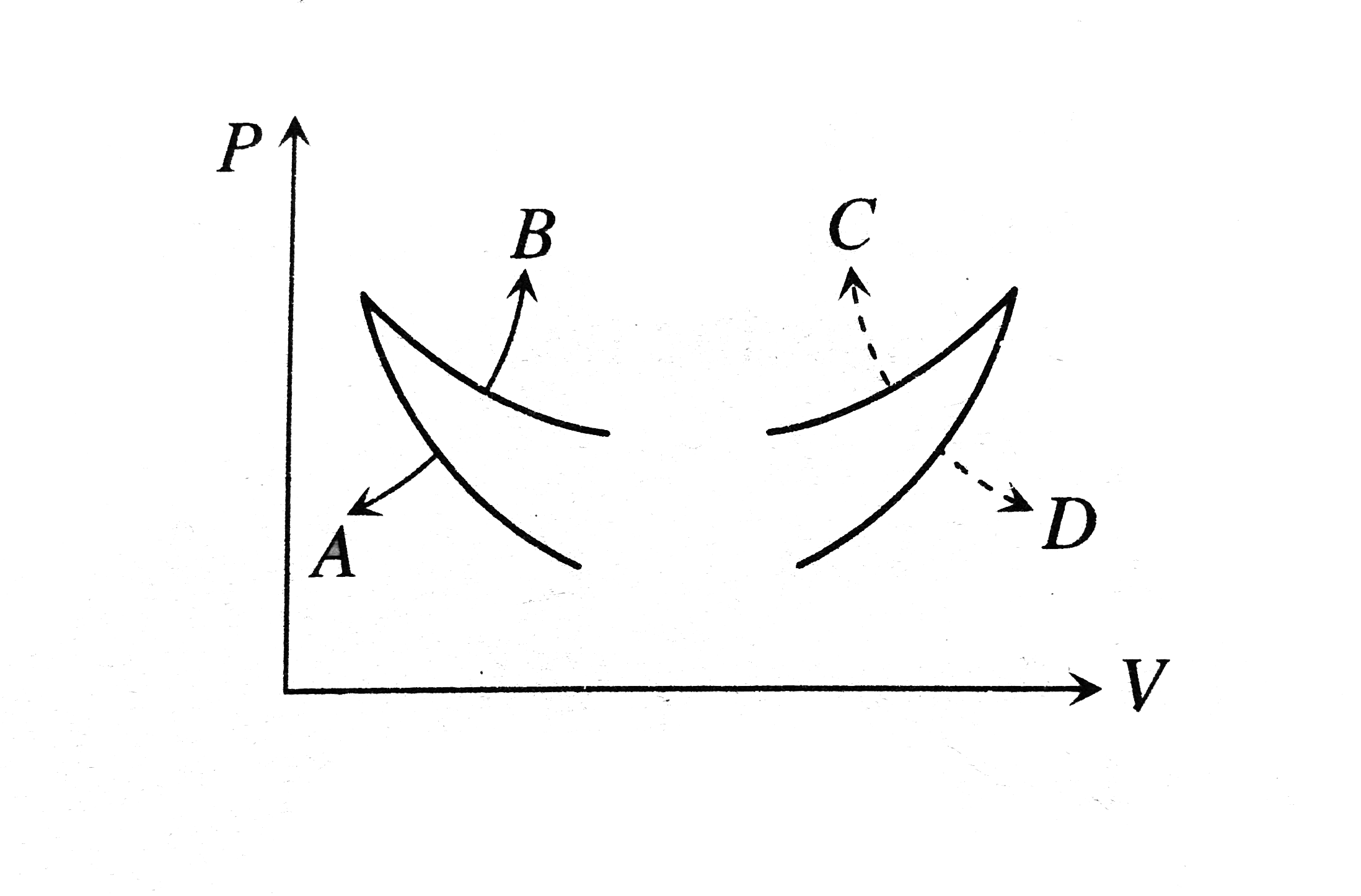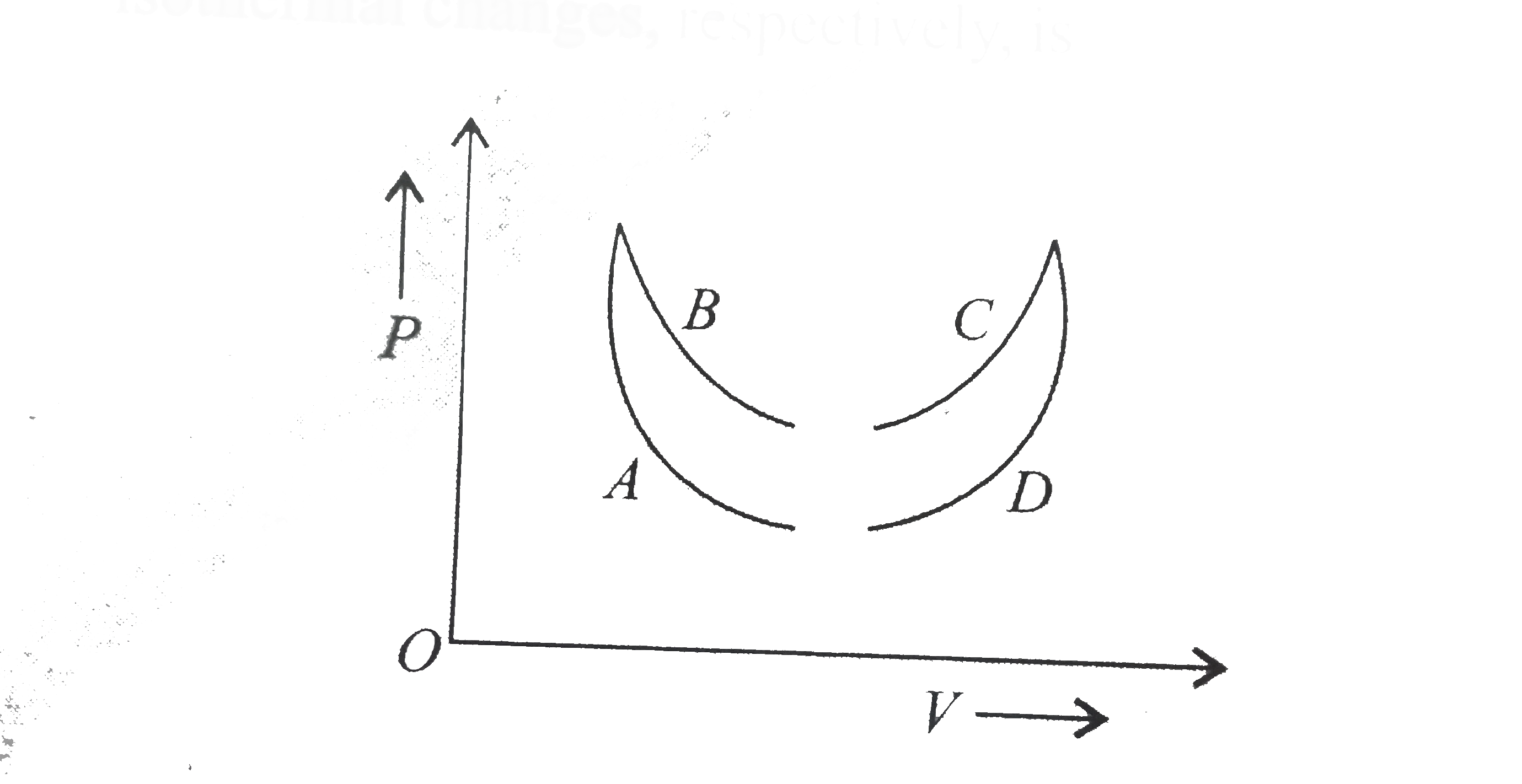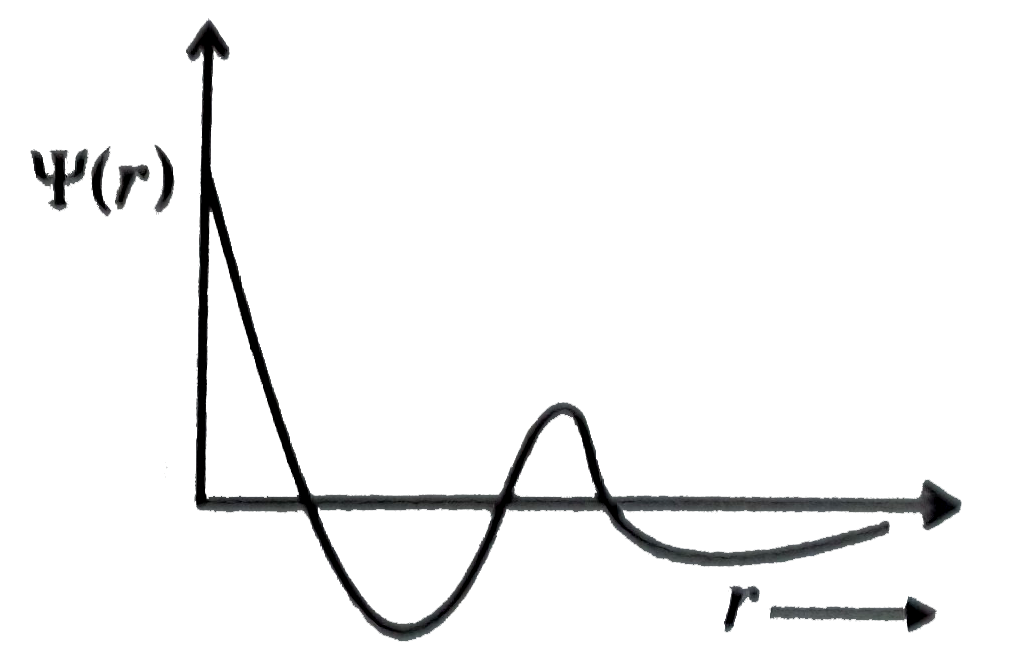Four curves A,B,C and D are drawn in Fig. for a given amount of gas. The curves which represent adiabatic and isothermal changes

A
C and D respectively
B
D and C respectively
C
A and B respectively
D
B and A respectively
Video Solution
Text Solution
The correct Answer is:C
Slope of adiabatic
case = -rP
Slope of isothermal is = -p
|
Topper's Solved these Questions
- KINETIC THEORY OF GASESBOOK - BANSALCHAPTER - KINETIC THEORY OF GASESEXERCISE - Exercise-2
4 Videos
- KINETIC THEORY OF GASESBOOK - BANSALCHAPTER - KINETIC THEORY OF GASESEXERCISE - Reasoning Type
1 Videos
- KINETIC THEORY OF GASESBOOK - BANSALCHAPTER - KINETIC THEORY OF GASESEXERCISE - Practice Exercise
3 Videos
- HEAT TRANSFERBOOK - BANSALCHAPTER - HEAT TRANSFEREXERCISE - Exercise
89 Videos
- UNIT DIMENSION, VECTOR & BASIC MATHSBOOK - BANSALCHAPTER - UNIT DIMENSION, VECTOR & BASIC MATHSEXERCISE - Exercise
10 Videos
Similar Questions
Knowledge Check
Four curves A,B,C and D are drawn in Fig. for a given amount of gas. The curves which represent adabatic and isothermal changes
 AC and D, respectivelyBD andC, respectivelyCA and B, respectivelyDB and A, respectively
AC and D, respectivelyBD andC, respectivelyCA and B, respectivelyDB and A, respectivelyFour curves A,B,C and D are drawn in Fig. for a given amount of gas. The curves which represent adiabatic and isothermal changes
 AC and D respectivelyBD and C respectivelyCA and B respectivelyDB and A respectively
AC and D respectivelyBD and C respectivelyCA and B respectivelyDB and A respectivelyThe ratio of slopes of adiabatic and isothermal curves is
AγB1γCγ2Dγ3
In the given graph, adiabatic and isothermal curves are shown. Then,

View SolutionWhich of the following P-V curve best represents. As isothermal process?
View SolutionWhich curve in figure represents the curve of ideal gas?

View SolutionWhich of the following P-V curve best represents. As isothermal process?
View SolutionWhen heat is given to a gas in an isothermal change, the result will be
View Solution


